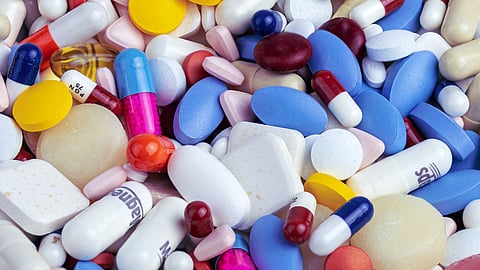

The Union Health Ministry said on Friday that there was a reduction in medicines for four rare diseases, along with sickle cell anemia, due to increased domestic production by Indian pharmaceutical companies.
The reduction in prices coincides with the ministry's heightened focus on addressing 13 specific rare diseases, including sickle cell anemia.
Medicines for four rare diseases, i.e., Tyrosinemia Type 1, Gaucher's Disease, Wilson's Disease, and Dravet-Lennox Gastaut Syndrome, along with sickle cell anemia, have been approved and are being manufactured domestically.
Sources from official channels have indicated that the approval process for four new medications catering to three diseases, including Tablet Sapropterin for Phenylketonuria, Tab Sodium Phenyl Butyrate, Tablet Carglumic Acid for Hyperammonemia, and Capsule Miglustat for Gaucher's disease, is currently undergoing the approval process and will be accessible by April 2024.
As these drugs are manufactured indigenously, the annual cost of Nitisinone capsules used in the treatment of Tyrosinemia Type 1 will be reduced to one-hundredth of the price of the imported medicine. According to PTI, a source has stated that, for instance, the yearly cost of imported capsules is Rs 2.2 crore, whereas the domestically manufactured capsules will now be available for just Rs 2.5 lakh.
Also, the imported Eliglustat capsules come at an annual cost ranging from Rs 1.8 to 3.6 crore, while the domestically manufactured capsules are accessible for Rs 3 to 6 lakh per annum, the sources said. In another case, the price of the imported trientine capsules used in the treatment of Wilson's disease comes to Rs 2.2 crore per annum, but with the drug being manufactured domestically, it will be available for Rs 2.2 lakh.
As the drug is being manufactured indigenously, the cost of the imported cannabidiol (oral solution) used in the treatment of Dravet-Lennox Gastaut Syndrome will be 1–5 lakh per annum. Previously, it was available at Rs 7–34 lakh per annum.
According to industry projections, commercial supply of Hydroxyurea Syrup used in the treatment of sickle cell anemia is likely to begin by March 2024, and the initial cost would be Rs 405 per bottle. The price of this oral suspension stands at 840 USD (equivalent to approximately Rs 70,000) per 100 ml for abroad.
Until now, none of these drugs had been manufactured within the country. The initiative began in July 2022, initiating extensive deliberations involving academia, pharmaceutical industries, various organizations, CDSCO (Central Drugs Standard Control Organization), and the Department of Pharmaceuticals. Subsequently, a list of 13 rare diseases, in addition to sickle cell anaemia, was identified as priority areas.
Collectively, a rare disease is a health condition that affects an estimated 6–8 percent of the population in any given country at any specific time. According to estimates, India could potentially have 8.4–10 crore cases of rare diseases. Notably, nearly 80 percent of these conditions are of genetic origin.
(Input from various media sources)
(Rehash/Dr. Sushmita Ganguli)
